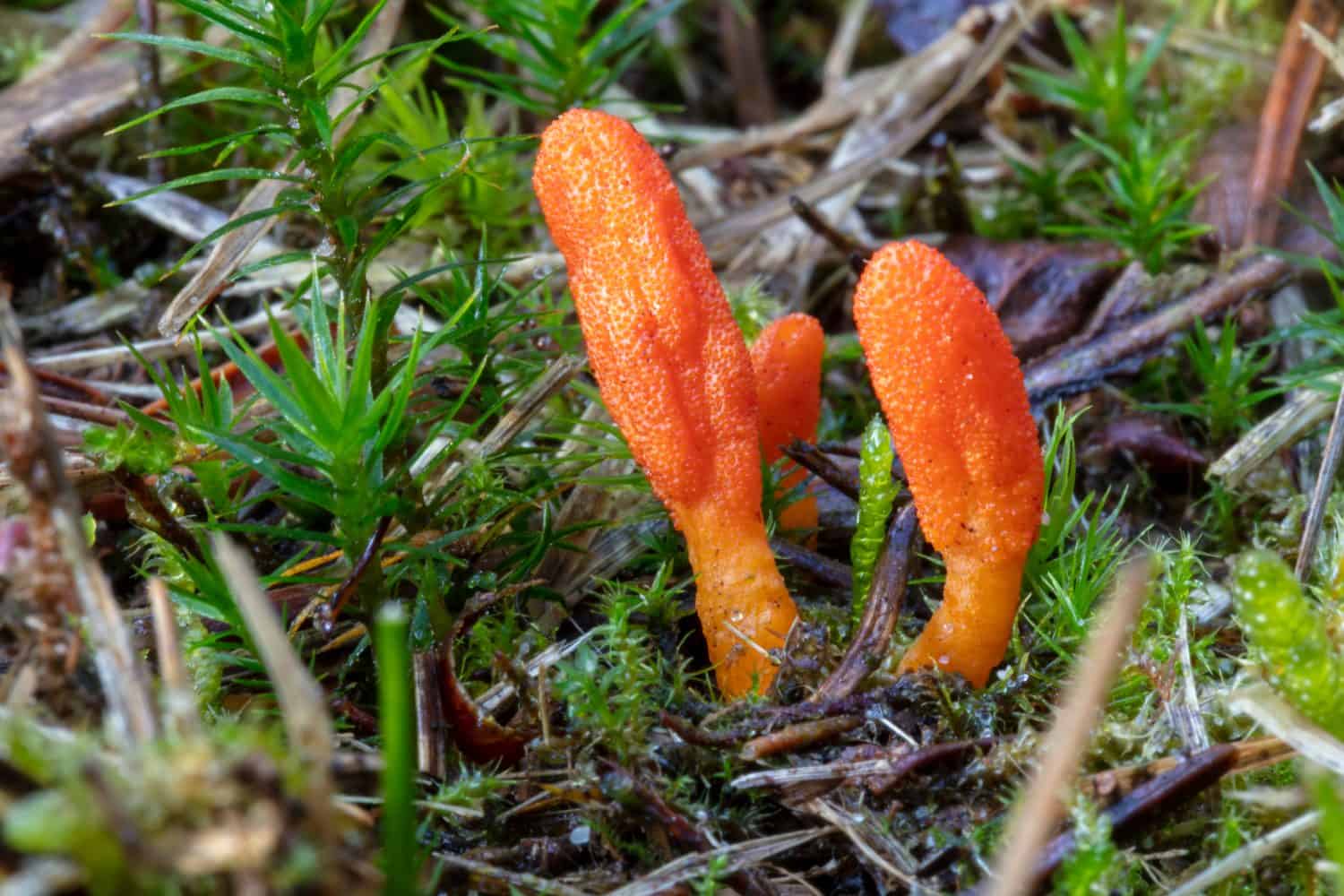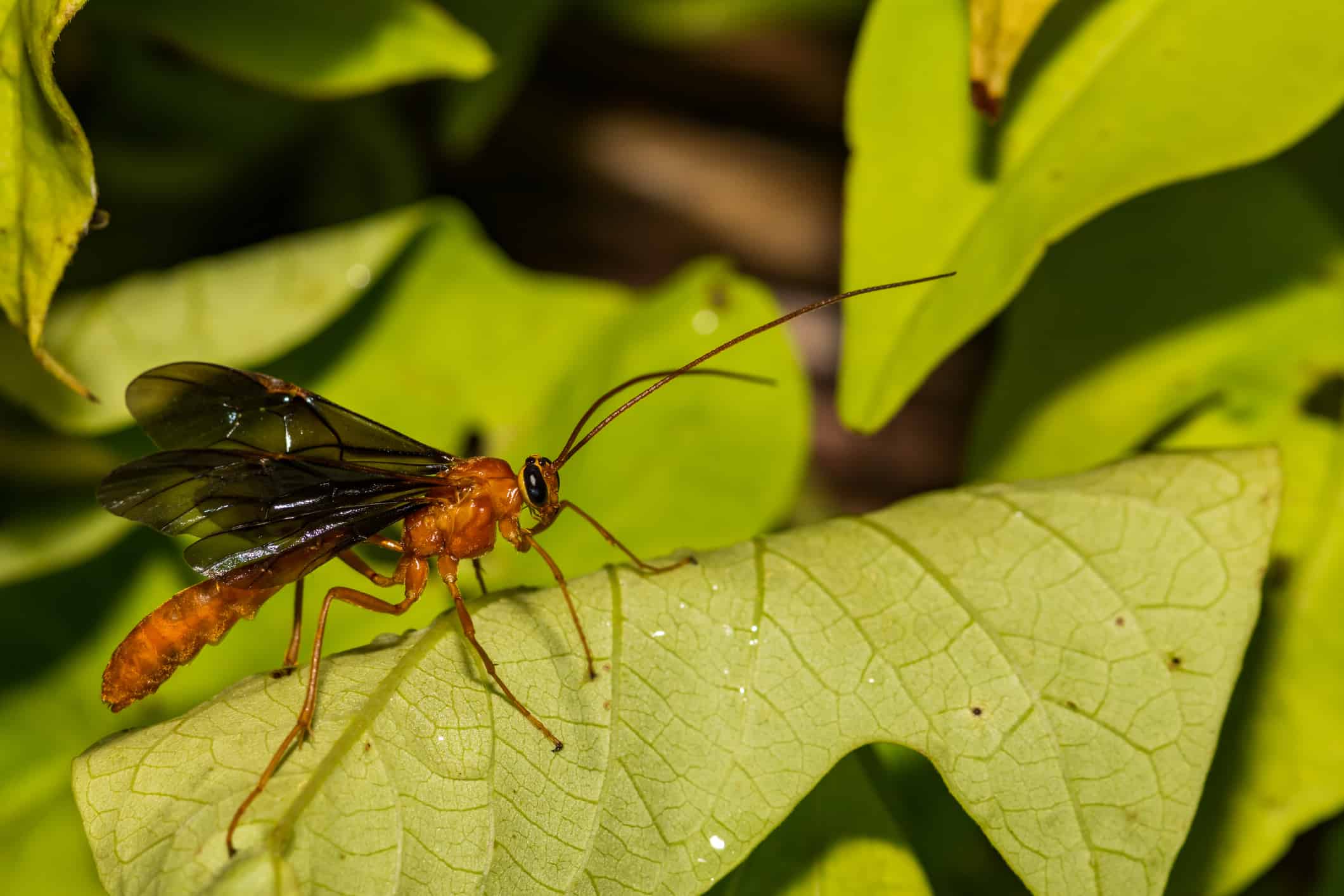When it comes to parasites, some beneficial relationships seem unbalanced at first, but several of the most famous in nature are symbiotic in some way. Parasites aren’t always taking without receiving — unless it’s a parasitoid.
Parasitoids and some parasitic plants and fungi created nature’s most deadly parasite infestations. Instead of feeding off the host slowly, harming it over time, these parasites will actively kill their host.
When it comes to parasitoid insects, many lie dormant until the larvae are full-grown. Then, it erupts from the body of its host, effectively ending their life so they can start their own.
Below, discover six of nature’s most deadly parasite infestations — and learn about how these kill-or-be-killed relationships have even made it to video games and television shows.
Strangler Fig

Strangler figs can grow up into a host tree’s canopy.
©Maurizio Callari/Shutterstock.com
When it comes to parasitic plants, few have as deadly of a touch as the strangler fig. Named for its behavior, the strangler fig is endemic to Florida and the West Indies. It’s one of 900 different fig species.
The strangler fig starts as an “air plant.” Because the seeds of strangler figs are sticky, they’ll get stuck to the trunks of other trees around it and lodge in the bark fissures of the host. As it grows its roots, seeking dirt and nutrients in the ground, it also engulfs the hosts.
Ravaging by a strangler fig can halt early in the process, but once a strangler fig’s roots are thick and well-grown, the host tree remains doomed.
Before killing its host, however, a stranger fig’s complex web of branches around the trunk of its host does provide extra support during extreme weather. It also keeps nearby plants anchored and attracts cedar waxwings and other pollinators.
Cordyceps Fungus

The Cordyceps genus includes hundreds of types of parasitic fungi.
©Edwin Butter/Shutterstock.com
As a fungus, cordyceps have an interesting and killer effect on those it infects. Cordyceps is an entire genus of fungus, and Ophiocordyceps unilateralis remains the most common species that infects insects. Instead of living as larvae or pupae in an animal (as fungi don’t have these life stages), the fungus infects the animal through spores. The fungus lays dormant within their hosts’ bodies, draining them completely of nutrients until there’s nothing left. The fungus then fills the body with reproductive spores and “compels” the insect to seek a higher elevation so it can release the spores out of its decaying body and infect more creatures.
Despite the fungus telling the ant where to go, researchers at the Pennsylvania State University conducted studies on infected ants and found zero traces of the fungus in the brain.
Dr. Jenelle Kim, 9th generation master herbalist, doctor of Chinese medicine, and founder and formulator at JBK Wellness Labs, finds Cordyceps exceptionally interesting.
“One of the most intriguing aspects of Cordyceps is its origin: it is a parasitic fungus that grows on the larvae of insects. When it infects its host, the fungus gradually replaces the host tissue, eventually growing out of the insect’s body. This lifecycle is a remarkable example of nature’s complexity and has been a subject of interest in scientific and traditional medicine communities.”
Dr. Kim shed light on the beneficial side of cordyceps — its uses in humans. “In traditional Chinese medicine, Cordyceps is highly valued for its potential health benefits. It’s considered a tonic for enhancing vitality, stamina, and endurance, which is why it has been used by athletes and the elderly alike. It is also believed to support lung and kidney health, making it a commonly used herb in formulations for respiratory and renal issues.
Cordyceps in Pop Culture
Did you know that this fungus inspired a series of video games and hit the silver screen on Netflix? That’s right — one of the most popular recent video games (and now HBO show starring Pedro Pascal and Bella Ramsey), The Last Of Us, is set in a post-apocalyptic world ravaged by a fungus inspired by cordyceps. The game, as well as the show inspired by it, suffer from a fictional mutated fungus in the cordyceps genus that turns the infected into cannibalistic monsters.
Also featured in Netflix’s documentary Our Planet (as seen in the video above), macro views of the cordyceps fungus infecting ants and other insects dazzled viewers. The time-lapse video of the fungus forcing an ant away from its colony and up a tree to die shed light on the seemingly mind-controlling fungus.
Gordian Worms

Horsehair worms will emerge and kill their host in water.
©iStock.com/ePhotocorp
Also referred to as horsehair worms, gordian worms are a parasitoid worm that infect the bodies of insects like grasshoppers, beetles, cockroaches, crickets, and more.
On average, the life cycle of a horsehair worm follows the following steps:
- The egg, which is laid in water by the parents and is usually accidentally ingested by an insect.
- The pre-parasitic larvae, which hatches from the egg once inside a host.
- The larva, the parasitic version of the young worm that will begin to live and grow within the host.
- The adult, which will often cause the host to drown themselves so they can leave the host’s body in the safety of water.
Gordian worms remain a little less aggressive than the others who make the list — causing death only to emerge and unintentionally infecting the host in the first place. Thankfully, these parasitoid worms pose no threat to public health, as they’re not known to affect humans or pets.
Parasitoid Wasps

Wasps will inflict egg-laying wounds on the insects they infect.
©JasonOndreicka/iStock via Getty Images
The lifecycle of a parasitoid wasp remains interesting and much different from “regular” wasps and bees. Instead of reporting to a queen or living in a hive, these wasps live solitary lives. Each type of parasitoid wasp has a specific type of insect it targets to begin the cycle of reproduction. Depending on the species of wasp, the targeted insect might be a wood-boring beetle, a caterpillar, a stink bug, or an aphid. Wasps won’t discriminate on age; they simply want a healthy insect on which to lay their eggs.
Once they find a viable candidate, the wasp will lay their eggs inside of the insect. It’s easiest to recognize on caterpillars since it looks like the insect has a back full of rice grains. These “grains” are actually eggs that feed off the insides and nutrients of the host. Once the larva finishes its pupa stage, it emerges from the insect — effectively killing the host — and lives its adult life.
Tachinid Flies

Different tachinid species will infect specific insects.
©HWall/Shutterstock.com
The genus of tachinid flies includes many different species that infect specific insects with their eggs, much like parasitoid wasps. In the state of California alone, researchers have found over 400 tachinid species.
Like other parasitic insects, the larvae and pupa that exist within the infected animal will eat its organs — saving the best for last. Like Gordian worms, tachinid flies will allow the host to live only as long as it needs to grow to maturity. Once the pupa has reached a fully-grown stage, it will devour the host’s critical organs and emerge to begin its life outside of the host’s body.
The host insect depends on the species of tachinid fly. Trichopoda pennipes will infect true bugs, Erynniopsis antennata attacks two types of beetles, and Erynnia tortricis goes after various types of moths.
Dodder

Dodder will wrap and infect the internal and external bodies of plants.
©EVGEIIA/Shutterstock.com
Joining the ranks of deadly life that kill their hosts is dodder or Cuscuta, a group of over 200 types of parasitic plants. Members of this genus have an intrusive way of killing their hosts — once a dodder plant finds another plant that can provide its nutrients, it will insert its roots into the host’s vascular system.
Once it has firm roots within the host plant, dodder will let its vestigial root die and then branch out its existing arms to infect multiple plants at a time.
Dodder not only kills the plant by taking its nutrients and growing within its vascular system; it will also spread disease that won’t kill itself but will speed up death for its host. Unlike other parasites on this list, dodder doesn’t need its host to survive to reach maturity. By the time that dodder infects a plant, it already has the ability to live on its own (which is why it has a vestigial root).
As far as impact goes, dodders can create massive agricultural problems. The infection of multiple plants with dodder can reduce a crop yield significantly. Preliminary research shows that tomato plants attempt to employ a complicated defense against dodder with limited success.
The photo featured at the top of this post is © Jojo dexter/Shutterstock.com
Thank you for reading! Have some feedback for us? Contact the AZ Animals editorial team.






